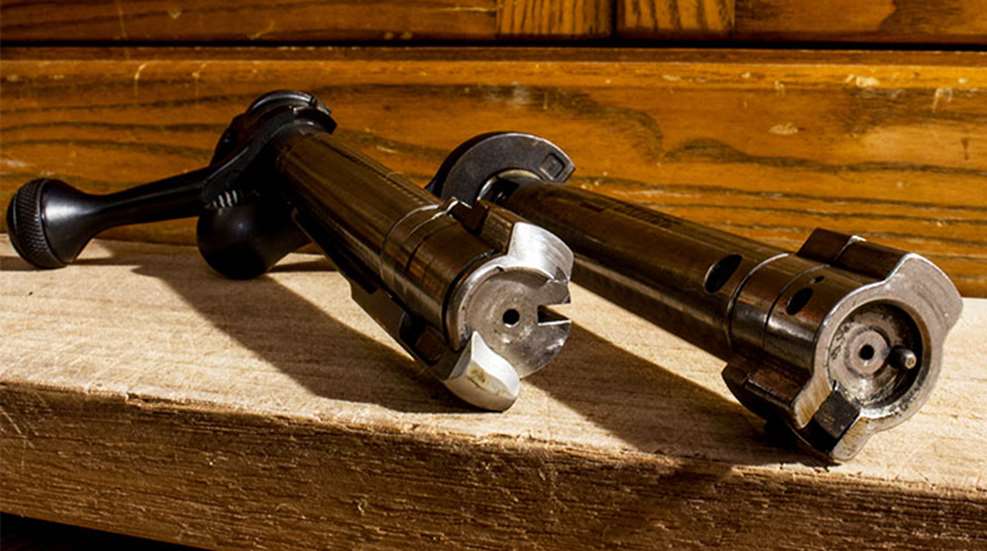Ever heard shooters talk about “controlled feed” versus “push feed” and wondered what they meant? It sounds complicated, but it’s actually a pretty simple idea. It all comes down to how the rifle moves a bullet from the magazine into the chamber.
Understanding the difference can help you choose the right rifle for you, whether you’re hunting deer or just enjoying a day at the range. Let’s break it down in simple terms.

What’s a Bolt-Action Rifle?#
First, a quick refresher. In a bolt-action rifle, you manually load each bullet by lifting a handle, pulling a metal tube (the “bolt”) backward, pushing it forward, and locking it down. That simple motion does three things:
- Ejects the empty shell from the last shot.
- Picks up a new bullet from the magazine.
- Loads the new bullet into the chamber, ready to fire.
The difference between controlled feed and push feed is all in how the bolt picks up and holds onto that new bullet.
This quick video shows you the basic mechanics of how a bolt-action works. It’s the foundation for everything we’re about to discuss!
- How a Bolt-Action Rifle Works http://www.youtube.com/watch?v=c5fQBzaNrZI
Controlled Feed: The Old-School Grabber#
Imagine the bolt has a big claw on its side. This is the extractor.
In a controlled-feed system, as the new bullet rises from the magazine, the rim of the bullet casing slides right up under that claw. From that moment on, the bolt has full control of the bullet. It holds it tight against the bolt face as it shoves it into the chamber.
Think of it like carrying a plate: you’ve got your hand securely under it the whole time.
The most famous controlled-feed action is the Mauser 98, a legendary design known for its incredible reliability.
Pros of Controlled Feed:#
- Unbeatable Reliability: Because the bolt has a firm grip, it’s almost impossible for the bullet to get misaligned or stuck. This is why hunters who face dangerous game (like bears or lions) swear by it. A jam is not an option!
- Controlled Ejection: You can pull the bolt back slowly to drop the empty shell right beside you, or yank it back fast to fling it far away. You’re in control.
Cons of Controlled Feed:#
- Slower, More Deliberate Action: You can’t just drop a loose round into the chamber and close the bolt. It has to be fed from the magazine for the claw to grab it.
- More Expensive: It’s a more complex mechanism to manufacture, so these rifles often cost more.
Push Feed: The Modern Pusher#
Now, imagine a bolt with a much smaller, spring-loaded clip on its face.
In a push-feed system, as you push the bolt forward, it simply pushes the bullet out of the magazine and shoves it into the chamber. The extractor claw only snaps over the rim of the bullet casing at the very last moment when the bolt is locked.
Think of this like sliding a plate across a table. You’re just pushing it from behind.
The Remington 700 is a classic example of a push-feed rifle, praised for its accuracy.
Pros of Push Feed:#
- Simpler & Cheaper: It’s easier and less expensive to make, which means the rifles are often more affordable.
- Potentially More Accurate: Because the bolt face is simpler, some argue it allows for a more consistent lock-up, which can lead to better accuracy. This is a topic of endless debate!
- Convenience: You can easily drop a single round directly into the chamber and close the bolt on it—a handy feature for a quick follow-up shot.
Cons of Push Feed:#
- Less Reliable Under Duress: If you operate the bolt quickly and sloppily (something that can happen under stress), it’s possible to create a “double-feed” jam where two bullets get stuck. The bullet is not held securely until the very end.
So, Which is Better?#
Honestly, for 99% of shooters, both systems work great.
Modern push-feed rifles are incredibly reliable, and the odds of a jam are very low with good-quality firearms and ammunition. They are often more accurate out of the box and more affordable.
However, if your life might depend on your rifle working flawlessly every single time, no matter what—like in a dangerous game hunt—the proven, old-school reliability of a controlled-feed action provides peace of mind that is hard to beat.
Ultimately, the choice comes down to personal preference, budget, and what you plan to do with your rifle. Now you know the difference!

